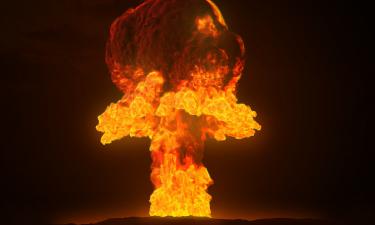Fed’s rate cuts may kill US dollar soon
M R Venkatesh

By cutting interest rates the US Fed expects to stimulate consumption, crucially lower mortgage payments, and in the process trigger a recovery in the US economy. Be that as it may, top economists -- including Noble Laureate Joseph Stiglitz -- point out to the futility of this exercise saying that this cut in interest rates will have little impact on the overall scenario.
According to them, it is a case of too little and too late -- akin to applying pain balm when chemotherapy was the need of the hour.
Even as the interest rate cuts are carried out experts believe that US Fed chairman Ben Bernanke may be open to the charge of creating 'moral hazard.' After all, in sum and substance, the act of the Fed is rewarding all those who were party to reckless borrowings and lending.
As US lowers its interest rates dramatically, economists are worried that it could find that global capital is moving away to other countries which offer higher rates of interest simply on account of arbitrage opportunities. This could mean appreciation of currencies across continents and depreciation of the US dollar. As the dollar depreciates against other currencies, goods from other countries would become costlier in the US, leading to inflationary pressures within the US economy.
Inflation within the US is not the only issue that bothers economists. What complicates the entire matrix is that the US is dependent on global capital flows of approximately $900 billion in 2007 to sustain its economy. With global inflation untamed and central bankers of other countries having virtually exhausted every other policy option to deal with inflation, interest rates are at a high across continents.
Naturally, none of the central bankers of other economies are in any mood to cut interest rates in tandem with the Fed.
Consequently, it is feared by many economists that this steep interest rate cut effected by the Fed would trigger currency readjustments. This would be particularly sharp should different economies fail to lower their domestic interest rates.
It is thus no wonder that the dollar is going the Titanic way against the other currencies even as I write this. Similarly, given this paradigm of interest rate differential prevailing between the US and India, the Rupee which had posted handsome gains against the dollar in recent months too is expected to appreciate further in coming months.
Naturally, the Reserve Bank of India is caught in this predicament. As global capital finds its way to India because of higher interest rates here, RBI would increasingly be 'forced' to cut interest rates. If it does not, the deluge of foreign exchange flows would lead to a corresponding increase in Rupee circulation within the economy and thereby lead to higher inflation and still higher interest rates.
But with an overhang of liquidity and domestic inflationary pressures caused due to a multiplicity of local factors, lowering interest rates is not a preferred policy option. No wonder the RBI was reluctant to cut interest rates while undertaking the latest review of the Credit Policy on January 29. Surely, a Catch-22 situation for RBI.
Given this scenario, as (stock) markets realise these intrinsic dangers arising out of interest rate cuts initiated by the US Fed, they are sure to witness some correction.
No wonder markets the world over are already feeling exhausted within days of the Fed announcing the moves. Where is the question of comparing or analysing the quantum of risks, returns and rewards when the principle itself is in doubt? This is one question that seems to have come back to haunt market players as they understand the mess in all its dimensions.
For all these reasons the interest rate cuts may not work and Fed's game plan could well be condemned. And that is the crux of the issue -- the US economy would have collapsed had the Fed not cut the interest rates and as it cuts the interest rates it could endanger the dollar and cause its collapse.
Needless to emphasise, the beneficiary of the rate cuts are the stock markets and not the US economy as a whole as is commonly believed.
Click here to read the full text of the article
Source: Rediff.com
Subscribe to Pravda.Ru Telegram channel, Facebook, RSS!





